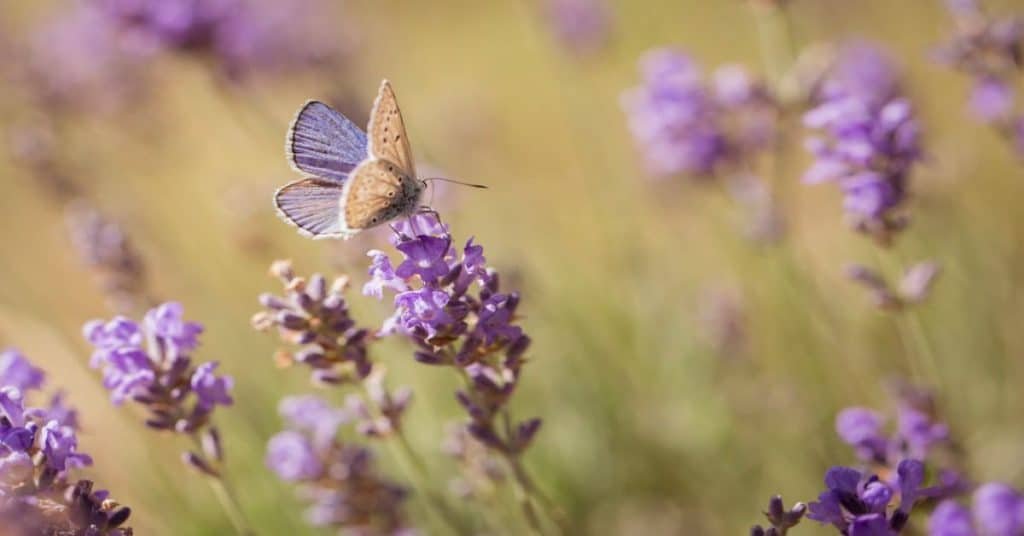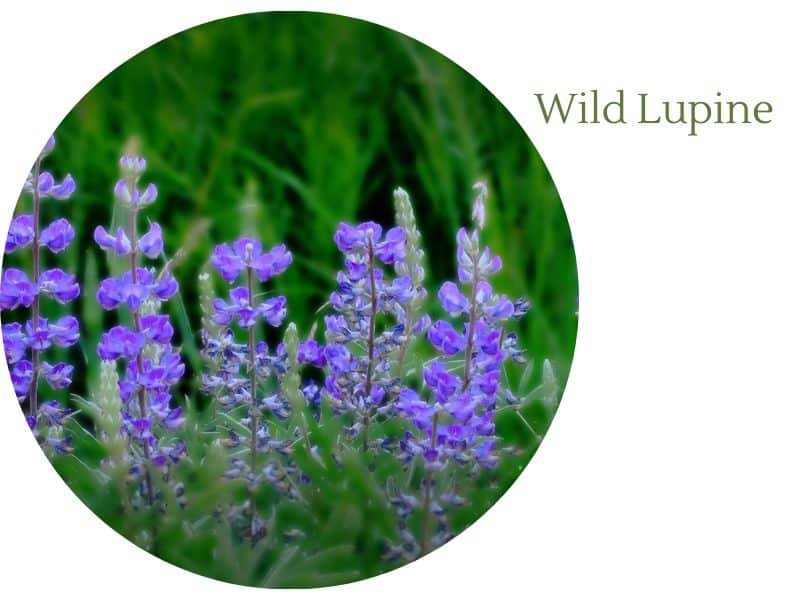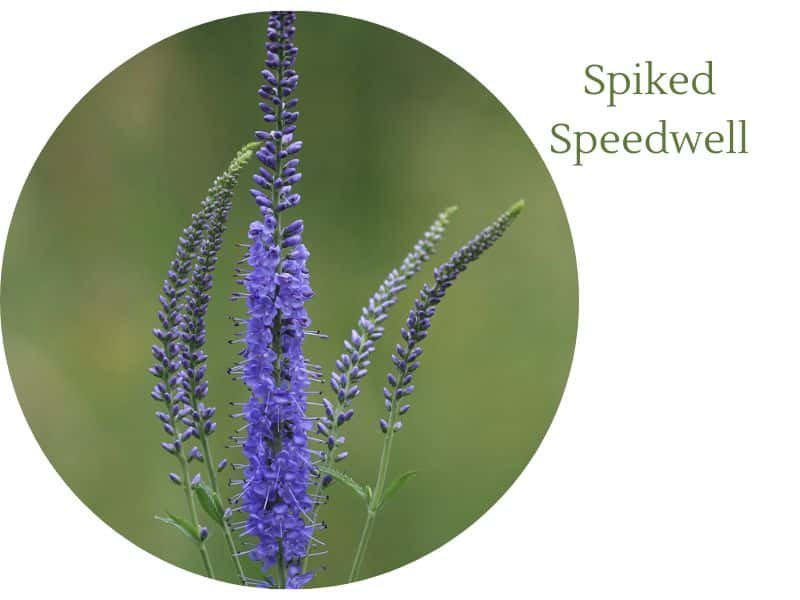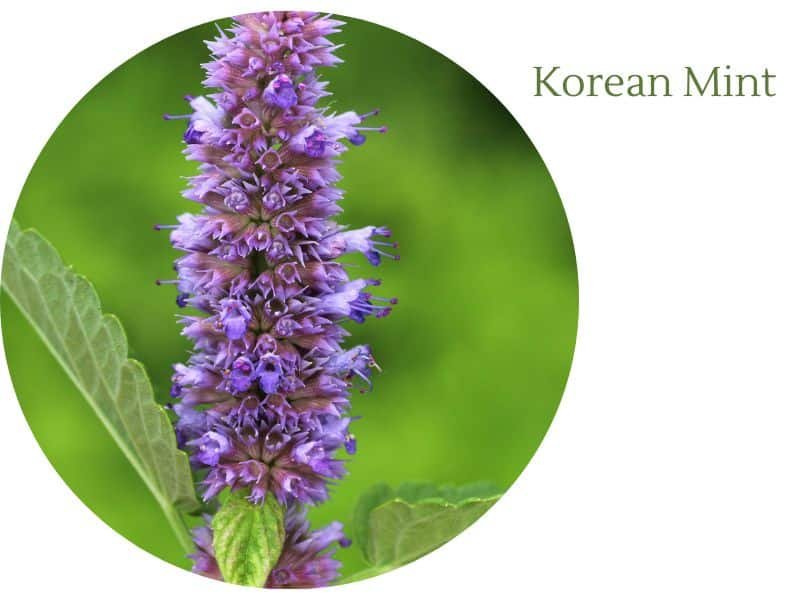The vibrant and bold color of purple cone-shaped flowers is the epitome of royalty, elegance, and creativity. Purple cone-shaped flowers are known for their vibrant and regal appearance, symbolizing elegance and creativity.

This diverse list of plants includes both perennial and annual varieties, as well as edible options. Some notable purple cone-shaped flowers are:
- Wild Lupine (Lupinus perennis)
- Spiked Speedwell (Veronica spicata)
- Butterfly Bush (Buddleja davidii)
- Plumed Cockscomb (Celosia argentea)
- Larkspur (Delphinium)
- Korean Mint (Agastache rugosa)
- Common Lavender (Lavandula angustifolia)
- Wood Betony (Stachys officinalis)
- Anise Hyssop (Agastache foeniculum)
Table of Contents
Perennial Purple Cone Shaped Flowers
Wild Lupine (Lupinus perennis)

Growing Zones: 3 to 8
Sun Needs: Bright, direct to partial
Plant Height: 10 to 25 inches
Blooming Time: Late spring
If you look from afar, you might mistake wild lupine for lavender due to their similar floral arrangement. However, this slightly acidic soil-loving plant comes from the Fabaceae family and is not part of the Lamiaceae family. This purple cone-shaped flower is native to North America and although typically grows in purple or blue, it can also produce rare white or pale pink blooms. Wild lupine holds a special place in Native Americans’ hearts. It has been used in various traditional ceremonies and as a source of dye.
Spiked Speedwell (Veronica spicata)

Growing Zones: 4 to 8
Sun Needs: Full, direct
Plant Height: 24 to 30 inches
Blooming Time: Midsummer
As the name indicates, spiked speedwell is often used as part of a bouquet for sick loved ones, thanks to its healing properties and cultural meaning to wish for one’s speedy recovery. In terms of maintenance, this purple cone-shaped flower would not ask for much. This plant loves fertile and well-drained soil and would perform best in loamy or sandy soil. Give this plant a regular watering schedule and you’re good to go! Nonetheless, spiked speedwell is prone to become overcrowded due to its ability to self-reseed. All you need to do is properly manage and do regular thinning to control its growth.
Butterfly Bush (Buddleja davidii)

Growing Zones: 5 to 9
Sun Needs: Bright, direct
Plant Height: 36 to 60 inches
Blooming Time: Midsummer
Do you love watching the graceful butterflies playing and flying all around your garden? If so, you can invite more of this winged insect with the help of this favorite nectar snack–butterfly bush! Originating from China and Tibet, the butterfly bush got its nickname due to its ability to attract various pollinators, from butterflies to bees. However, in contrast to its gorgeous look, this plant has an invasive potential that can disrupt the local ecosystem. Butterfly bush can easily self-reseed, so you need to keep extra attention to keep this one in your garden.
Annual Purple Cone Shaped Flowers
Plumed Cockscomb (Celosia argentea)

Growing Zones: 2 to 11
Sun Needs: Bright, direct to dappled
Plant Height: 15 to 40 inches
Blooming Time: Early fall
Hardy in almost every cultivation zone, this purple cone-shaped flower is our low-maintenance superstar. Similar to wild lupine, plumed cockscomb stuns in not only purple, as yellow, red, orange, and pink variations are also available to grow. Once matured and established, plumed cockscomb is generally tolerant to several challenges, including drought, heat, and high humidity. This plant is most notable to be made as a cut flower, thanks to its unique flower heads that resemble a cock’s comb.
Larkspur (Delphinium)

Growing Zones: 4 to 9
Sun Needs: Bright, direct
Plant Height: 30 to 36 inches
Blooming Time: Late spring
During the Victorian Era, larkspur was seen as a purple cone-shaped flower that symbolizes lightheartedness, and affection, as well as a reminder that summer is near. Similar to the old times, this nutrient-rich soil-lover has still primarily been used for ornamental purposes. Although being a highly poisonous plant, accidental poisoning due to ingesting larkspur in humans is not common. Nonetheless, to play it safe you need to keep this plant away from pets and animals, including horses, as well as children.
Korean Mint (Agastache rugosa)

Growing Zones: 4 to 9
Sun Needs: Bright, direct
Plant Height: 36 to 50 inches
Blooming Time: Early fall
If you’re looking for a fragrant purple cone-shaped flower, this moist-loving herbaceous plant that can be grown both as an annual and perennial is your perfect match. Korean mint produces aromatic green foliage and spectacular purple or lavender blooms that are a valuable source of food not only for pollinators but also for humans. In many East Asian traditional medicine practices, Korean mint is believed to relieve illnesses such as respiratory and digestive problems! This plant prefers to be grown in mild to warm climates.
Edible Purple Cone Shaped Flowers
Common Lavender (Lavandula angustifolia)

Growing Zones: 5 to 9
Sun Needs: Bright, direct to partial
Plant Height: 20 to 36 inches
Blooming Time: Early summer
Even if you’re new to the world of gardening, this well-known plant might not sound strange to you, isn’t it? Nicknamed English lavender, common lavender is native to the Mediterranean regions and is best known for its calming and relaxing properties. As an edible purple cone-shaped flower, common lavender can also be used as part of herbal and traditional medicine to treat headaches and migraines. Thriving as a perennial shrub, a pruning session is needed for common lavender to maintain its shape and slow down its growth.
Wood Betony (Stachys officinalis)

Growing Zones: 4 to 8
Sun Needs: Bright, direct, or filtered
Plant Height: 20 to 28 inches
Blooming Time: Midsummer
Featuring clumps of purple cone-shaped flowers with contrasting ovate and edible green foliage, wood betony is truly a feast for the eyes. This perennial belongs to the Lamiaceae family and is closely related to popular herbs such as mint and sage, as well as the common lavender! Wood betony is a fragrant flowering plant with an earthy mint aroma, however, it has a slightly bitter taste. This plant could be a great addition to drought-tolerance gardens, pollinator gardens, and edible gardens that are typically hassle-free.
Anise Hyssop (Agastache foeniculum)

Growing Zones: 5 to 9
Sun Needs: Partial to direct
Plant Height: 30 to 38 inches
Blooming Time: Early fall
Last but certainly not least, we got this purple cone-shaped flower that, only if you use your imagination, looks like a bunch of raspberry-flavored ice creams. A native to North America, anise hyssop produces a unique pleasant foliage that can be described as anise-like with a hint of licorice. This plant is greatly adaptable to various climate conditions and can withstand both hot and mildly cold temperatures. Once matured, anise hyssop is quite resistant to damage from deer and drought.
Which Purple Cone-Shaped Flowers Are Suitable for Indoor Gardening?
Unless you have an enormous indoor gardening space with suitable cultivation needs, unfortunately, not all purple cone-shaped flowers can be brought indoors. However, plants such as Korean mint, common lavender, anise hyssop, and wood betony would create a spectacular indoor garden as a potted herb or as container houseplants. All thanks to their growing needs, which are rather easy to replicate indoors, and compact to medium size.
Which Purple Cone-Shaped Flowers Attract the Most Pollinators?
Being pretty with pleasant aromas sometimes is not enough to attract our winged friend’s attention. Among those purple cone-shaped flowers, not all can be attractive enough for pollinators. The good news is, we have wild lupine, which is a host plant for the larvae of several butterfly species, including the endangered Karner Blue butterfly! Other flowers include spiked speedwell, larkspur, butterfly bush, common lavender, and anise hyssop are also known for their ability to attract pollinators.
Closing Remarks
On average, purple cone-shaped flowers are precious gems in the botanical world. Blessed not only with eye-catching inflorescence and mainly easy-to-replicate growing needs, but they’re also beneficial to treat various illnesses and promoting a healthy ecosystem.

New author in the hood. Loves gardening and flowers are my spirit animals (yes I know they are not animals but I insist). I will be covering most of the flowers’ topics here and occasionally random though as well.






